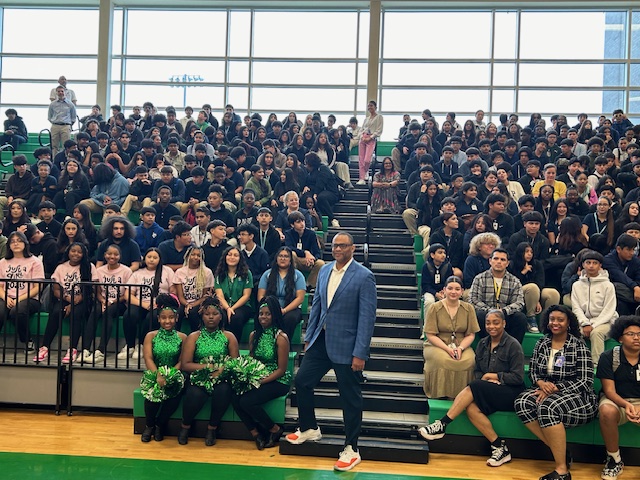
By Dorothy J. Gentry
Contributing Writer
Photos: Dorothy J. Gentry
During a visit to a local middle school Thursday morning, Congressman Marc Veasey asked a 7th grade student in Katie Mining’s Reading/Language Arts class if he liked reading.
The student hesitated, then answered truthfully, “A little bit.”
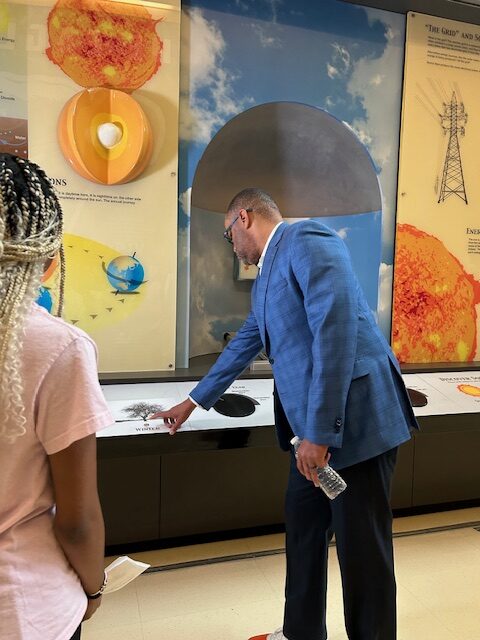
Veasey thanked him for his answer then gave the whole class advice on making the most of their education.
“Read as much as you can. In my job I have to read,” he told the students at Lady Bird Johnson Middle School in Irving ISD. “Being a congressman, I have legislation I have to read, summaries about committee hearings and more.
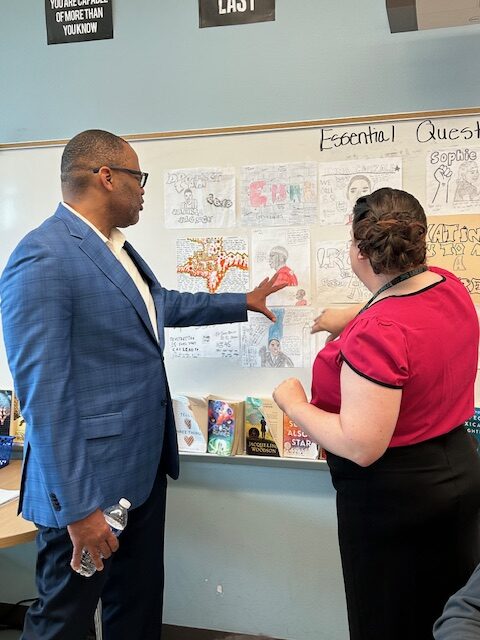
“A lot of the things you are learning here now, it seems hard to believe but it will help you when you go out into the workplaces,” Veasey said. “So just learning how to understand things in context and learning how to look for key words and understanding what’s important, what’s not as important – it doesn’t seem like it when you’re doing this work now – but you will definitely need it when you get older.”
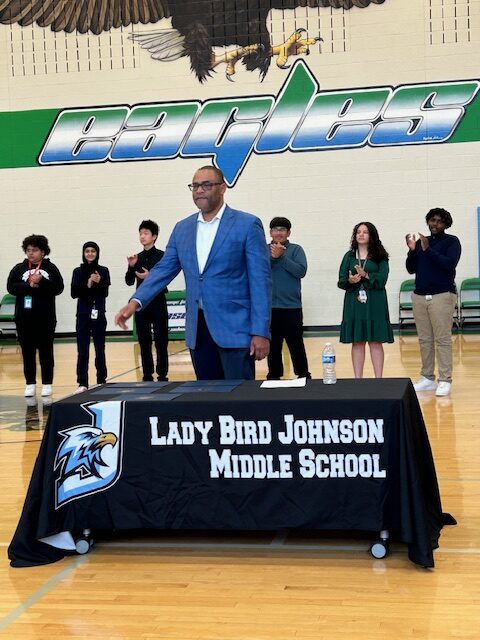
Veasey is a member of the United States House of Representatives for Texas’s 33rd congressional district, which includes parts of Irving. He toured Johnson Middle School (JMS), the first net-zero school in the state of Texas and one of the largest net-zero educational facilities in the country.
The 152,250 square foot campus serves more than 700 students in the sixth through eighth grades. The principal is Trenton Nickerson.
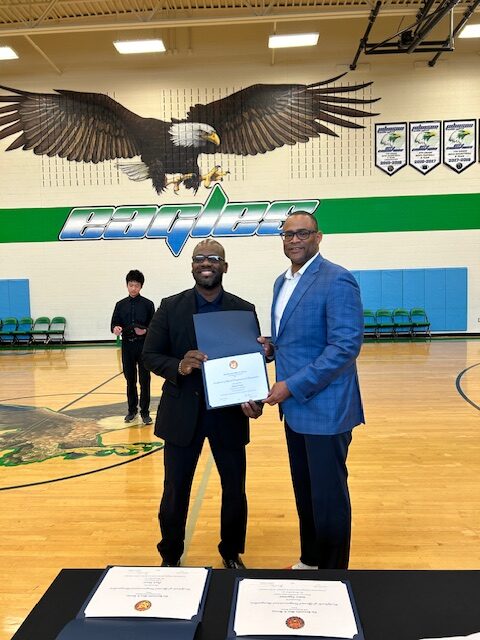
At JMS, energy is generated on site through solar panels across the building’s roof and turbines. It also features interactive displays to help engage students and visitors. It uses geothermal heating, solar panel technology, wind turbines, rainwater harvesting techniques, smart solar management and cutting-edge efficiencies to ensure it creates more energy than it uses every 12 months.

“This is my first time here and I think this a really cool school,” Veasey told the staff and students assembled for his visit. “Obviously, it’s a very unique school with displays and wind turbines on the school property, that’s not something you normally see at a school that’s kind of cool.”
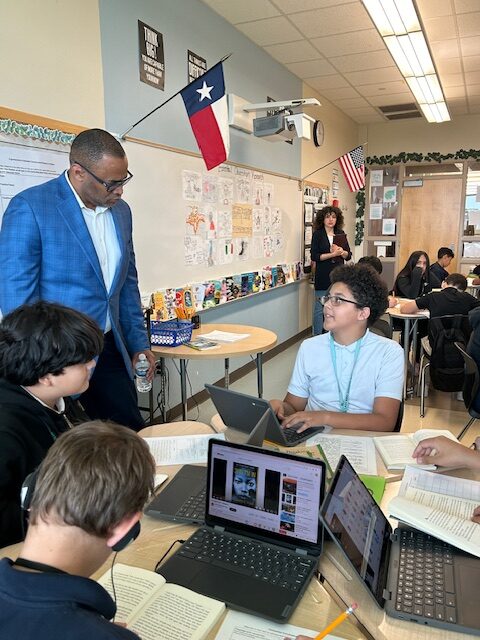
Veasey encouraged the students to be inspired and “really take advantage of some of the things here and the teachers that are helping you. I think you have a real big advantage going to school here. There’s a lot of curiosity that is in this school that you would otherwise have to go out of your way to learn about. But for you all, it’s right here at your fingertips.”
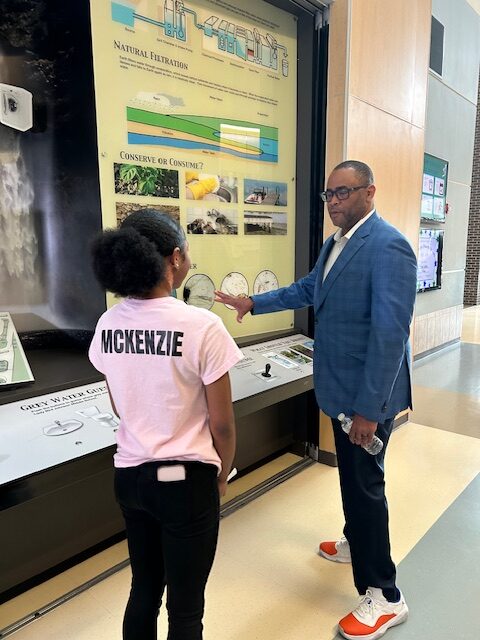
During his visit, Veasey visited classrooms and talked with teachers and students, and also toured the school’s Verizon Innovative Learning Schools technology lab where students showcased their latest technology project.
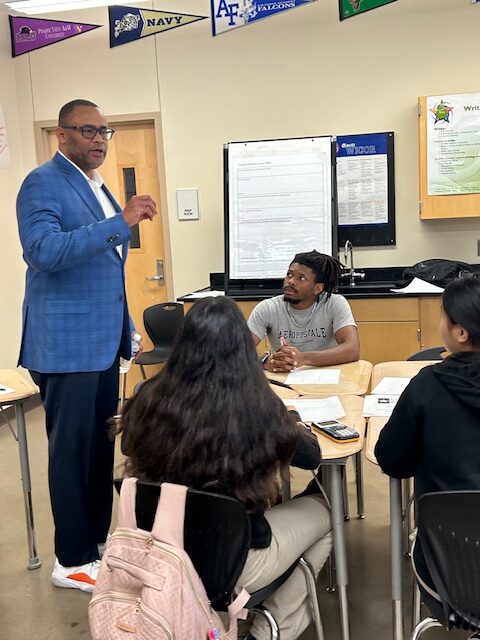
His visit also included a short ceremony in the school’s gym where he was treated to performances from the school’s band and orchestra members. He spoke to students and staff in attendance and presented certificates to some of the school and district personnel.
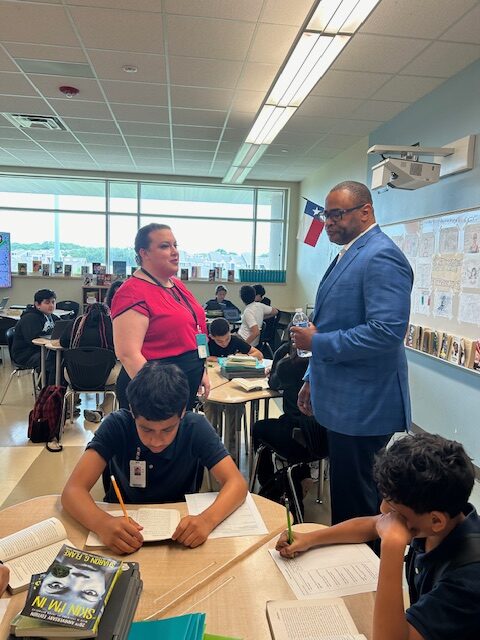
Veasey, who spent time as a substitute teacher early in his career, shared his advice for students trying to reach their goals.
“I would say time management, prioritization, and figuring out ways to stay driven, those are the three biggest things, and surrounding yourself with other kids that are positive.”
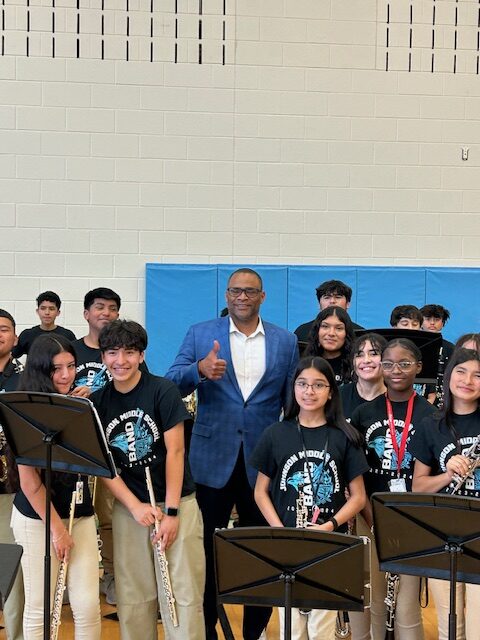
McKenzie Pleasant, an eighth grader at JMS who is also a student leader with the school’s Girls Group, said meeting the congressman “was really cool. I enjoyed what he had to say and getting to meet him. I had a lot of fun.”
As he was preparing to leave, Veasey continued to marvel at the school and what it offers its students.
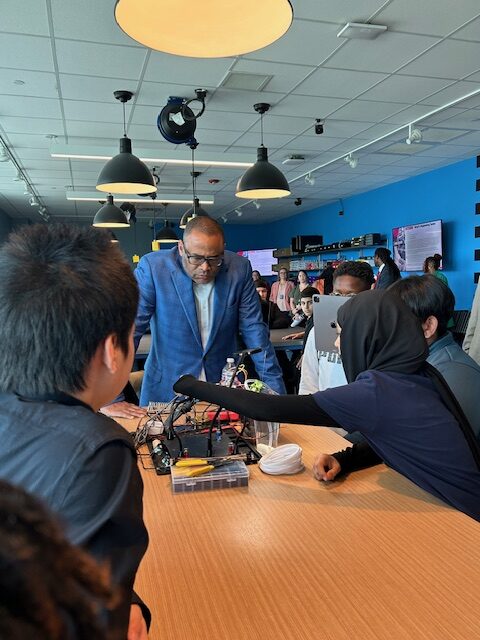
“The sky’s the limit for these kids and this school is really showing that. This is what today’s school should look like,” he said. “This is an awesome experience. I love what you are doing here (at JMS). It takes kids outside of the box and it’s not your typical type of school.”
Veasey added that he is concerned about the state of education in Texas.
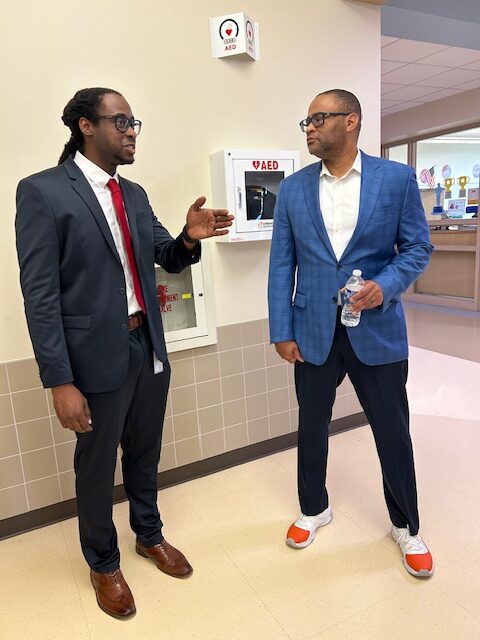
“I think the state is looking for any excuse it can to not invest more in public education and we need to be investing a lot more in public education, we need to be investing a lot more in how our kids learn,” he said. “I think that the state really has a responsibility to invest as much in our public schools and figure out ways to keep schools fresh and new and creative and keep curriculum new to be able to adapt to kids of all different learning styles and all curiosities.”





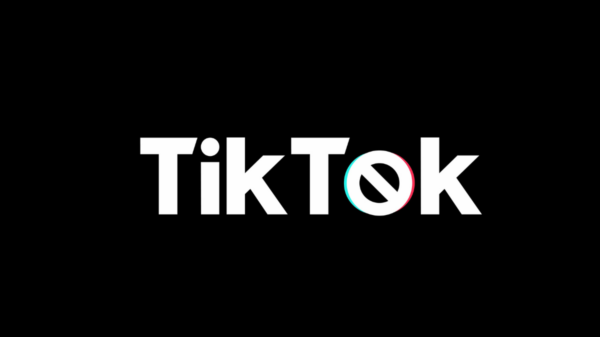
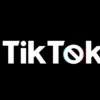


You must be logged in to post a comment Login